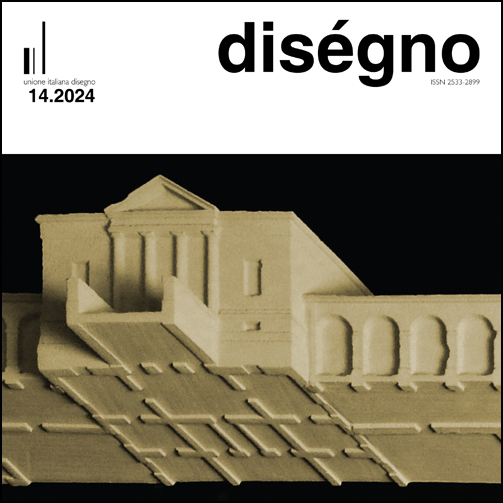Experiences in the Use of Analog Models in Micro-Architectures Design
DOI:
https://doi.org/10.26375/disegno.14.2024.23Parole chiave:
design process, analog models, microarchitectureAbstract
The use of analog models in microarchitecture design offers a series of benefits, from detailed exploration of small-scale elements to stimulating creativity and innovation. These enriching experiences significantly contribute to the design process and help develop more robust and effective architectural solutions. Models are tools that enhance haptic perception and play various roles in the analysis, experimentation, conceptualization, and teaching of microarchitectures. Their ability to provide a tangible and accessible representation of design makes them remarkable resources in the architectural design process.
Riferimenti bibliografici
Álvarez Prozorovich, F.V. (2011). Rastrear proyectos, contar historias. In Diagonal, No. juny 2011, pp. 10-13.
Carazo, E., Desvaux, N.G. (2014). Aprendiendo con maquetas. Pequeñas maquetas para el análisis de arquitectura. In EGA Expresión Gráfica Arquitectónica, No. 24, pp. 62-71.
Deleuze, G. (1989). El pliegue. Madrid: Grupo Planeta (GBS).
Dorado, M.I.A. (2013). Manos que piensan. Reflexiones acerca del proceso creativo del proyecto de arquitectura. In EGA Expresión Gráfica Arquitectónica, No. 22, pp. 196-203.
Dunn, N. (2014). Architectural Modelmaking. London: Laurence King Publishing.
Frascari, M., Hale, J., Starkey, B. (Eds.). (2007). From models to drawings: imagination and representation in architecture. London, New York: Routledge.
Galofaro, L. (1999). Digital Eisenman: An Office of the Electronic Era. Basel: Birkhäuser.
Jackson, P. (2022). Folding Techniques for Designers. London: Laurence King Publishing.
Mills, C.B. (2011). Designing with models: a studio guide to architectural process models. John Wiley & Sons.
Moon, K. (2005). Modeling messages: the architect and the model. New York: Monacelli Press.
Pallasmaa, J. (2012). La mano que piensa: sabiduría existencial y corporal en la arquitectura. Barcellona: Gustavo Gili.
Pallasmaa, J. (2022). Los ojos de la piel. Editorial GG.
Shen, T., Nagai, Y. (2017). An overview of folding techniques in architecture design. In World Journal of Engineering and Technology, No. 5, pp. 12-19.
Val-Fiel, M. (2016). The Conceptual Model in Parametric Architecture: Digital Materiality as an Icon. In Proyecto Progreso Arquitectura, No.15, pp. 138-149.
##submission.downloads##
Pubblicato
Come citare
Fascicolo
Sezione
Licenza
Copyright (c) 2024 diségno

TQuesto lavoro è fornito con la licenza Creative Commons Attribuzione 4.0 Internazionale.






